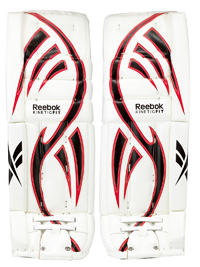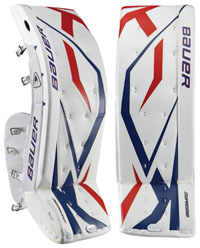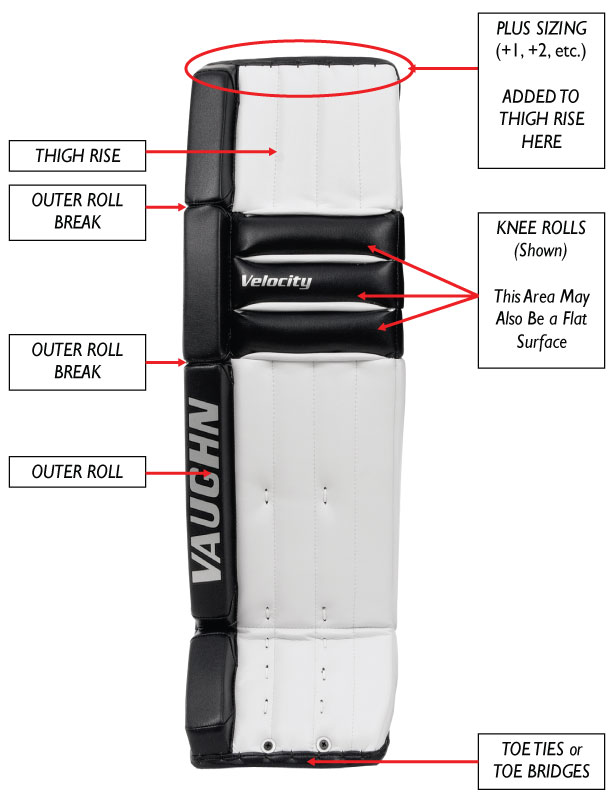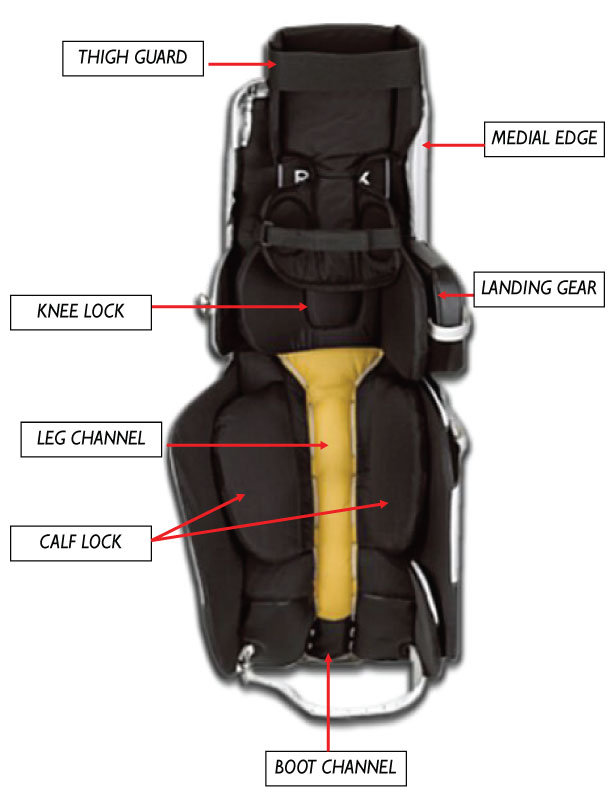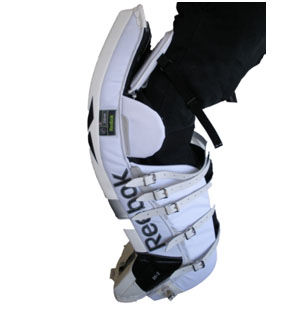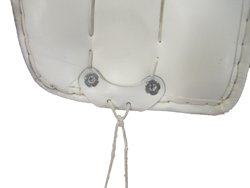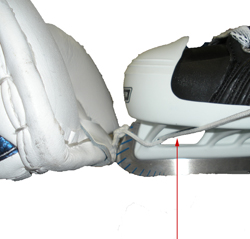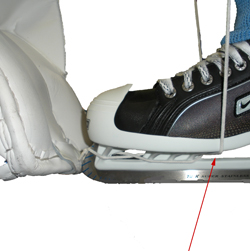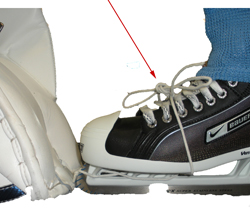|
Outer Roll
– stuffed
roll on the outside edges of the goalie pad. These help prevent the
puck from hitting the top of the pad and “skipping over” it into the
net. Pad breaks are located here, which help determine the
flexibility of the pad
· Pads
with 0 breaks in the outer roll are typically more rigid
à Good
for goalies with a wide butterfly (flexible goalies with the ability to
flare their legs further out to the sides in a butterfly position) who
don’t need a flexible pad to close the five hole
· Pads
with 1-2 breaks are easier to flex around the knee area
à “Single
Break” pads have one break below the knee area
· Good
for goalies with a moderately wide butterfly who need a little
flexibility in the pad to close the five hole
à “Double
Break” pads have one break below and one break above the knee area
· Good
for goalies with a more narrow butterfly who need a flexible pad to
close the five hole In a butterfly position.
Thigh Rise
– face of
pad that extends above the knee rolls or knee area.
· Most
pads these days come in +1” sizing, meaning that an extra inch has been
added to the top of the pad to help increase 5-hole coverage in the
butterfly position. Newer pads are even going to a +2 standard sizing
in their larger models (35” & 36” pads)
Knee Rolls or Knee Area:
Knee Rolls
–
typically 3 of these, allow for more flexibility in the pad through the
knee area. Their composition Includes:
· Shredded
foam – more rounded in shape, these rolls help deaden the puck upon
impact.
OR
· Rigid
Strips of High Density Foam – more flat in shape, these allow for more
predictable rebounds off of the knee area.
“Flat” Knee Area (no rolls)
– one
sheet of flat, HD foam keeps knee area more rigid and allows for more
predictable rebound direction.
Toe Tie/Sliding Toe Bridge
– both
function to keep the goalie skate attached to the bottom of the pad,
though they work in different ways
· Toe
Ties – allow the goalie to snug the bottom center of the pad close to
the front of the skate. This helps “center” the pad back to its
original position after making a butterfly type save.
· Sliding
Toe Bridges – function to keep the toe of the skate close to the bottom
of the pad, but allow for movement of the skate along the bridge
channel. This movement puts less stress on the goalie’s ankles while in
the butterfly position.
|
